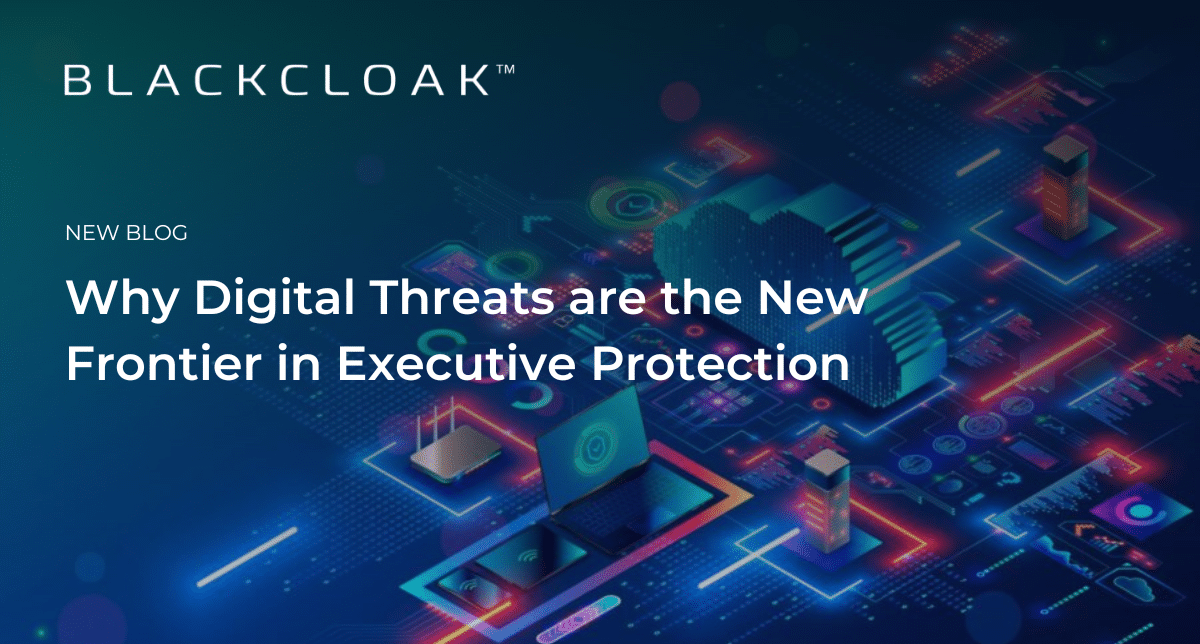Why Digital Threats are the New Frontier in Executive Protection

The landscape of threats facing executives has expanded far beyond the physical realm, and home is the new attack surface. Traditional security measures, while still essential, are no longer sufficient on their own to protect high-profile individuals from the myriad of digital threats that have emerged. Cybersecurity now plays a crucial role in executive protection, demanding a more holistic approach to safeguarding our leaders.
The Evolving Digital Threat Landscape
Executives are prime targets for cybercriminals, hacktivists, and even state-sponsored attackers. The reasons are clear: they hold the keys to a wealth of sensitive information, and often have significant influence over their organizations. This makes them vulnerable to a range of digital threats, including:
- Phishing and Spear Phishing Attacks: These attacks are designed to trick executives into revealing confidential information or clicking on malicious links. Spear phishing, in particular, targets individuals with tailored messages that appear legitimate, increasing the likelihood of success. While phishing attacks are commonly conducted via email, cybercriminals can also send malicious messages through SMS text messages, a tactic known as “smishing.”
- Business Email Compromise (BEC): Cybercriminals gain access to executive email accounts and use them to authorize fraudulent transactions or request sensitive information, leading to significant financial and reputational damage.
- Social Engineering: Attackers manipulate executives, or their associates, into divulging confidential information. This can occur through various means, such as phone calls, social media interactions, or even face-to-face encounters.
- Data Breaches: Executives’ personal devices and accounts can be targeted to gain access to sensitive corporate data. This is especially concerning as the lines between personal and professional use of technology often blur.
- Reputation Attacks: Cybercriminals can spread false information, damaging an executive’s reputation and, by extension, the reputation of their organization. These attacks can have long-lasting effects on both personal and professional levels. An organization’s reputation can also take a hit should it experience any of the cyberattacks mentioned above.
The Need for a Holistic Approach with Digital Threat Protection
Given the complexity and severity of these digital threats, it is imperative for Chief Security Officers (CSOs) and Executive Protection professionals to adopt a comprehensive approach to executive protection. Here are key strategies to consider:
- Cyber Hygiene Education: Ensuring that executives and their close associates are educated about the basics of cybersecurity is fundamental. Regular training on identifying phishing attempts, securing devices, using VPNs in public spaces and creating strong, unique passwords can significantly reduce the risk of successful attacks.
- Advanced Threat Monitoring: Implementing continuous monitoring solutions to detect and respond to suspicious activities in real-time is crucial. This includes monitoring for unauthorized access attempts, unusual network traffic, and other indicators of potential threats.
- Personal Device Security: Securing all devices used by executives, including personal smartphones, laptops, and home networks, is essential. This may involve installing robust security software, enabling multi-factor authentication, and regularly updating all systems, applications and browsers.
- Incident Response Planning: Having a well-defined incident response plan that includes specific protocols for addressing digital threats is vital. This plan should be regularly updated and tested to ensure its effectiveness in minimizing the impact of any security incidents.
- Collaboration with IT and Cybersecurity Teams: CSOs must work closely with the Chief Information Security Officer (CISO) and cybersecurity teams to develop and implement comprehensive security measures. This collaboration ensures that both physical and digital security strategies are aligned and mutually reinforcing.
- Personal Cybersecurity Services: Utilizing services that specialize in protecting the personal information of executives can prevent it from being exploited by malicious actors. These services can monitor for data breaches and help manage the removal of personal information from public databases and data brokers.
The rise of digital threats has redefined the boundaries of executive protection. Traditional physical security measures, while still important, are no longer sufficient on their own. By understanding the nature of digital threats and adopting a holistic approach that integrates both physical and cybersecurity strategies, CSOs can better protect executives from the evolving dangers of the digital age.
BlackCloak: Comprehensive Digital Executive Protection
At BlackCloak, we specialize in providing comprehensive Digital Executive Protection services tailored to the unique needs of executives. Our solutions are designed to address the full spectrum of digital threats, ensuring that your most valuable assets are safeguarded in this new frontier of executive protection.
Schedule a demo today.









